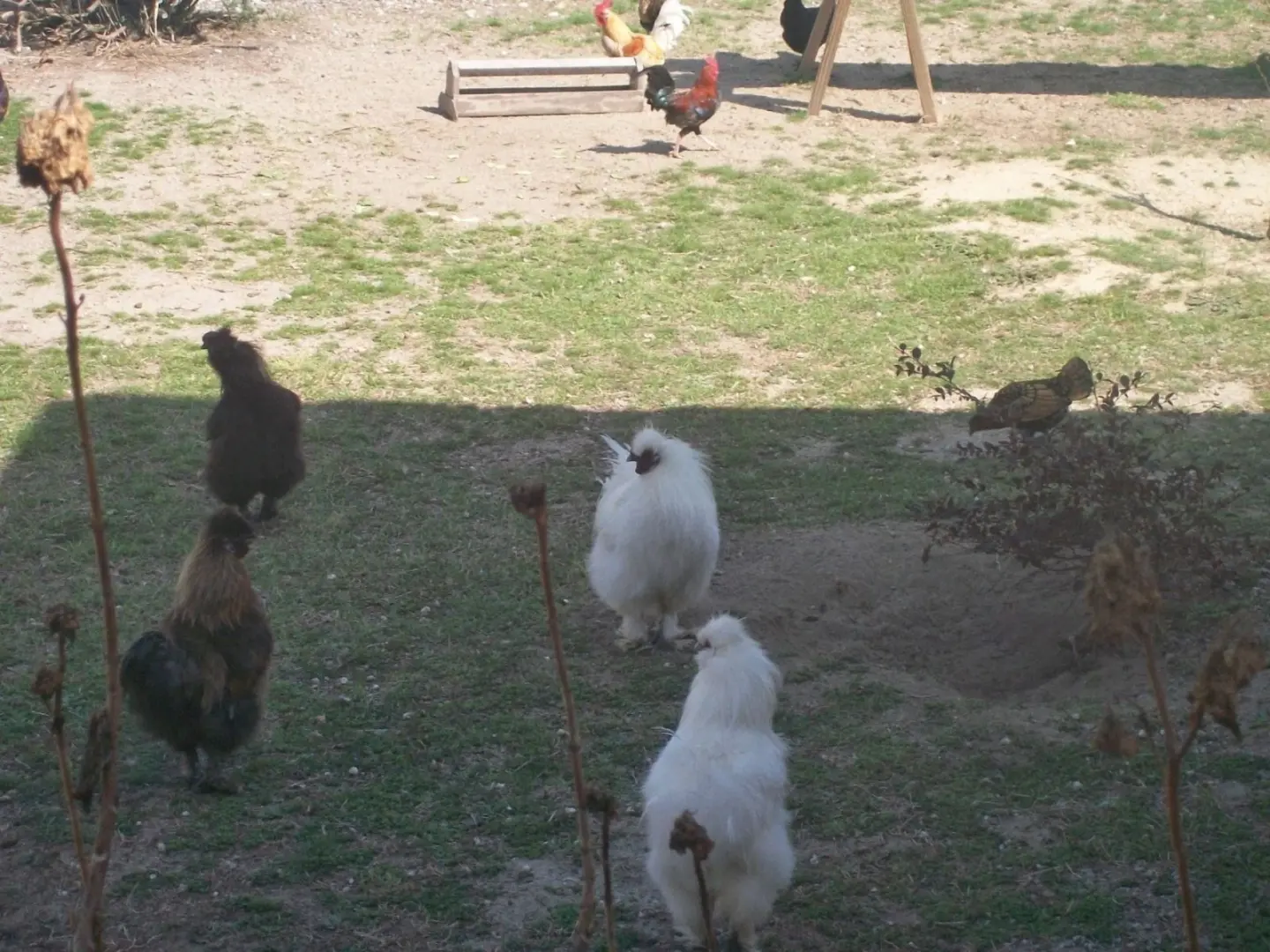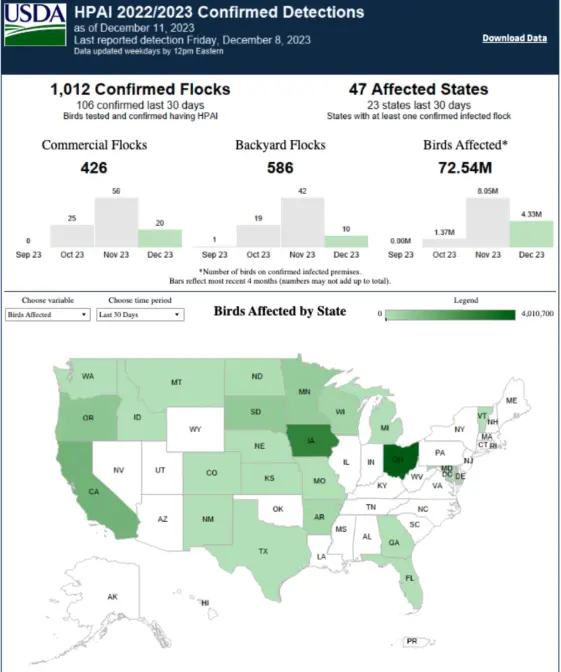
A flock of healthy chickens kept as pets.
Isabela Weiss | WVIA News | Report For America

A flock of healthy chickens kept as pets.
Isabela Weiss | WVIA News | Report For America

Isabela Weiss | WVIA News | Report For America
A flock of healthy chickens kept as pets.
Researchers and veterinarians are working to cull the spread of avian flu into the commonwealth as cases rise across the U.S.
In the last three months, nearly 14 million birds contracted avian flu in the U.S., according to the U.S. Department of Agriculture’s Animal and Plant Health Inspection Service (USDA APHIS). That number comes from their 2022-2023 Confirmations of Highly Pathogenic Avian Influenza (HPAI) in Commercial and Backyard Flocks.
While there are no reported cases, Gregory Martin, poultry educator for Penn State Extension, said the flu has likely made its way into the commonwealth.
“We assume that there are positive birds moving through the state at this time. And so we will, y’know, make sure our biosecurity is up and everyone’s using hand washing and doing a lot of different things to protect their flocks from getting sick,” said Martin.
WVIA News spoke with Martin on Dec. 4, a few days after Ohio, a neighboring state, reported the virus in a flock of 1.3 million birds. On Dec. 7, Ohio reported two additional infected flocks for a total of 4 million affected birds. Ohio is leading the country in active cases, as of Dec. 11.
The virus is lethal, said Martin. If one bird falls ill, usually the whole flock has to be put down.
“I’ve actually been on farms that, y’know, the birds look fine the day before – and were deathly ill the next day. And they were so fevered, they were hot to touch. They were really fevered. So, this is a very virulent disease for poultry. And so, you don’t really want to see them suffering…it’s like pneumonia in people,” said Martin.
Martin reiterated that humans cannot contract the virus from eating infected poultry.
“It’s illegal, for example, to put a sick bird on a truck and take it into the processing plant. There’s inspections done of the trailers before they even go into the plant. And then everything is inspected. Anything that looks suspicious is pulled out,” said Martin. “And so, yeah, even with all that, cooking would render anything in the bird harmless.”

The USDA APHIS posts a list of active avian flu cases on their website. These are the numbers from Dec. 11. A case is ‘active’ if it was detected over the last 30 days. The decontamination process takes over a month, according to Martin. (USDA APHIS)
This year’s uptick in cases is unlikely to cause a shortage in poultry production, but there are ways that Pennsylvanians can prevent cases from skyrocketing as they did back in 2022. Martin shared some things poultry producers should look out for.
“A lot of farmers say, ‘They’re doing everything correctly, why did it happen?’ And I say, ‘Well, something got into the flock. Y’know, these things do happen.’ We do see wild birds [that] will sometimes fly around or in and out of houses. The migrating birds fly over the farms doing what geese do as they fly. And so, you might step into something you don’t know you’re stepping into and then bring that in,” said Martin.
Researchers and veterinarians like Martin ask farmers to follow biosecurity protocols to keep their flock safe.
Producers can limit contamination by wearing a different set of shoes when tending to their animals and by disinfecting their gear before and after leaving the bird house. They should also separate birds by species to limit cross contamination.
Avian flu has the highest contagion rate during the migratory season, which lasts from early fall to February or March. The virus tends to die off by April, said Martin.
“It’s when we have a draggy migration when things can happen and we’ll see birds lingering around poultry facilities,” said Martin. “We had a few incidents when snow geese were parked around a farm that had chickens. [The farmer] never broke with the disease, but that was only because he was doing his best to scare the birds away. And he used good biosecurity and disinfections as he was going in and out of the houses.”
Martin said non-farmers can help out with reducing the spread by not overfeeding migrating wild birds. Sick birds might stay behind during the winter if they have a steady source of food.
In the last 30 days, Pennsylvania has not reported any cases of avian flu. Bordering states Ohio and Maryland have confirmed cases of the virus, as of Dec. 11.
WVIA News reached out to USDA APHIS for comment on how Pennsylvanians can best prepare themselves for possible in-state cases, but they opted out of an interview.

Sometimes, your mornings are just too busy to catch the news beyond a headline or two. Don’t worry. The Morning Agenda has got your back. Each weekday morning, host Tim Lambert will keep you informed, amused, enlightened and up-to-date on what’s happening in central Pennsylvania and the rest of this great commonwealth.
The days of journalism’s one-way street of simply producing stories for the public have long been over. Now, it’s time to find better ways to interact with you and ensure we meet your high standards of what a credible media organization should be.